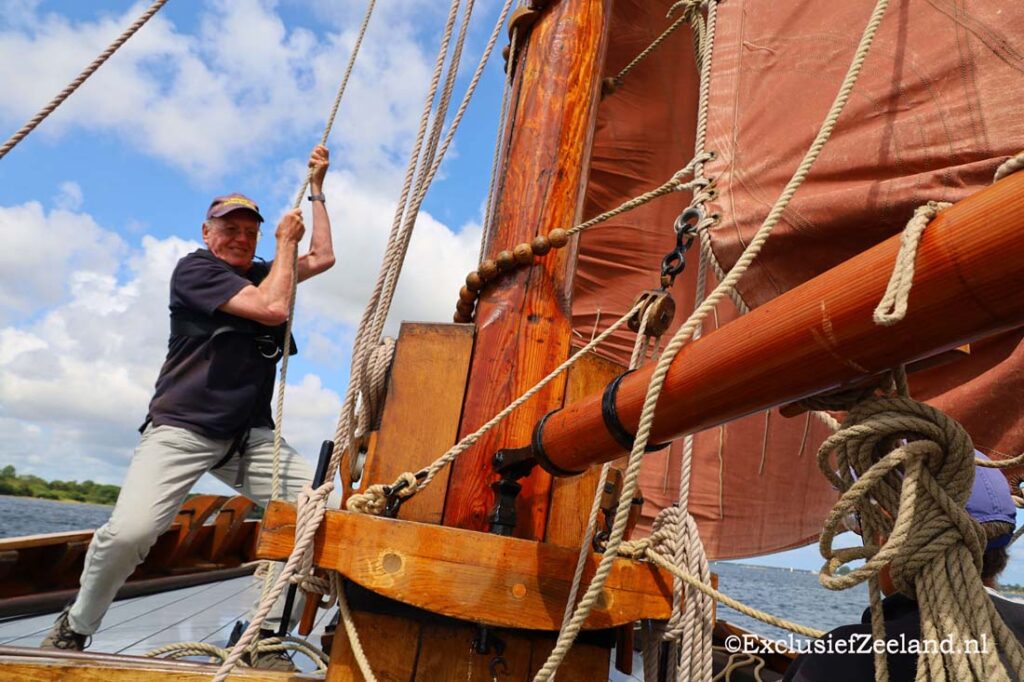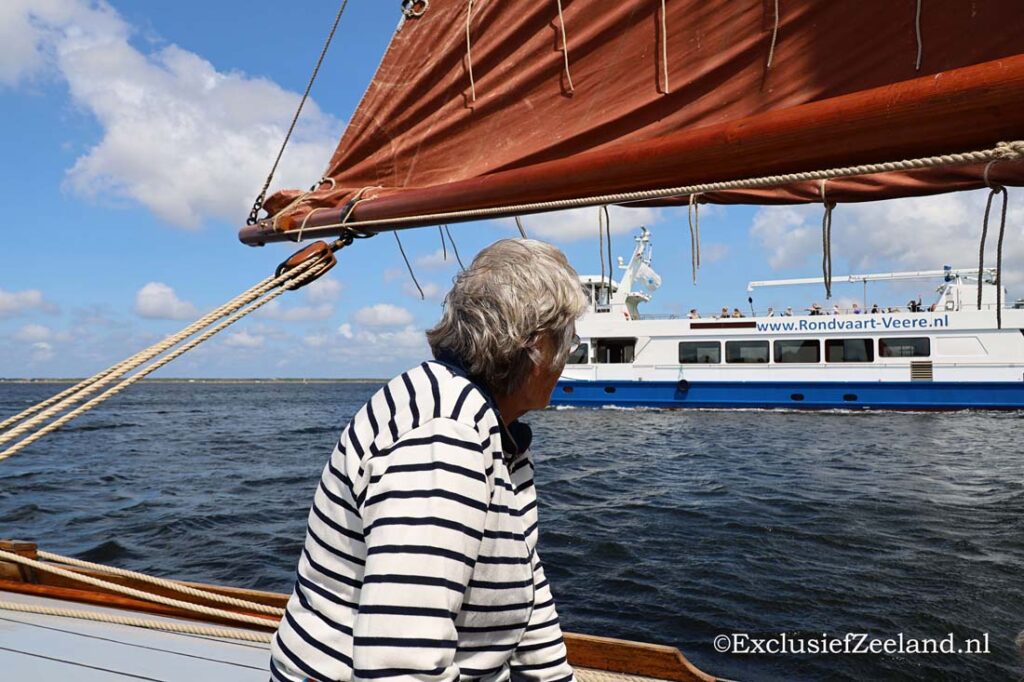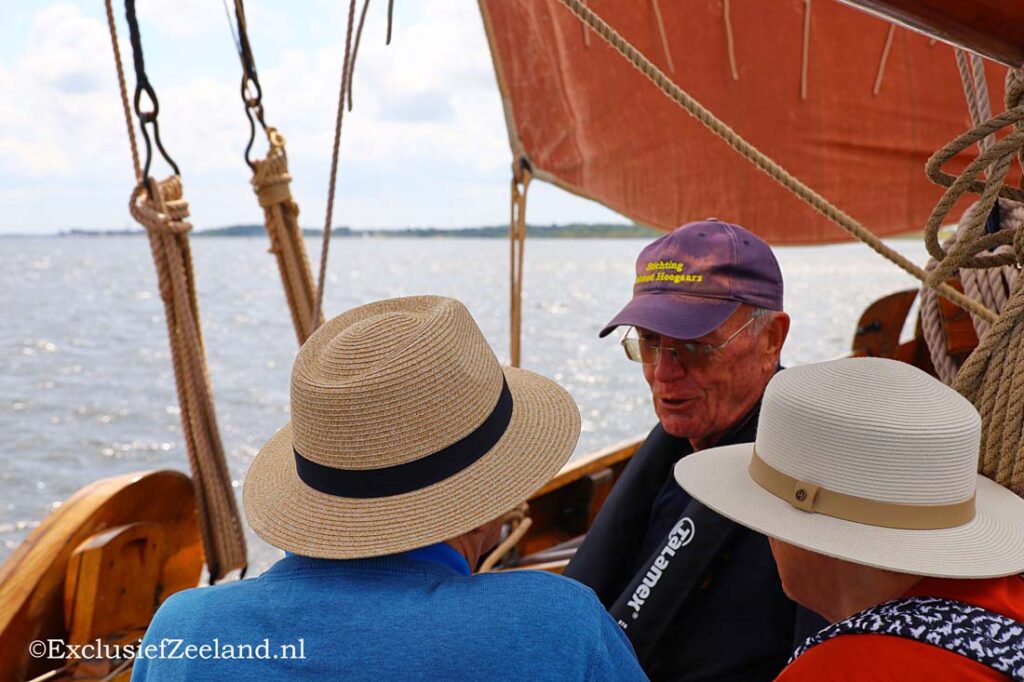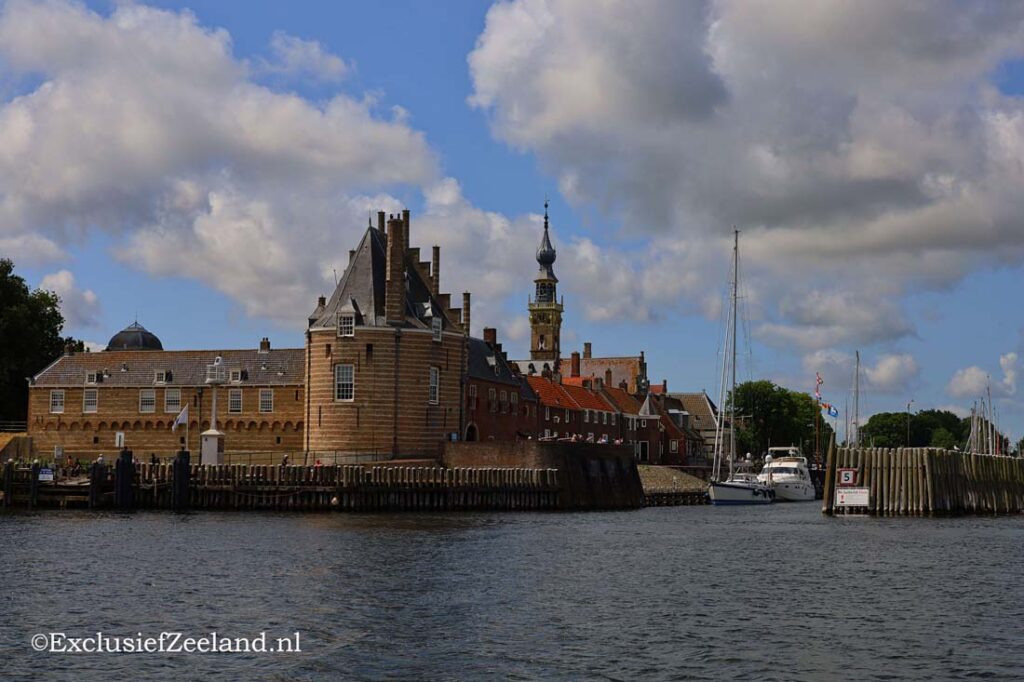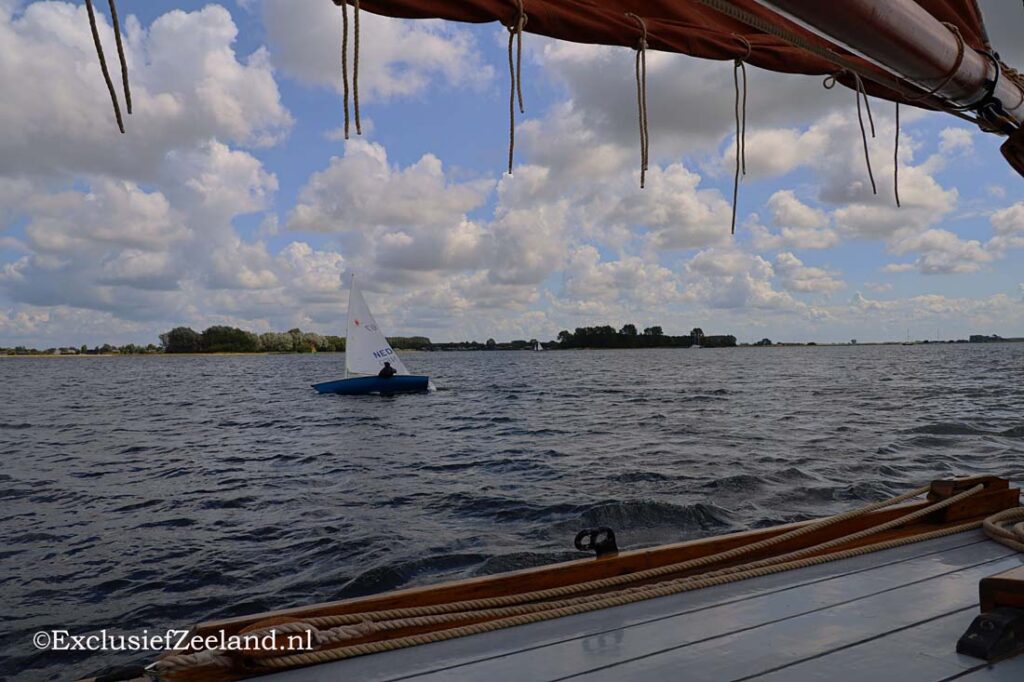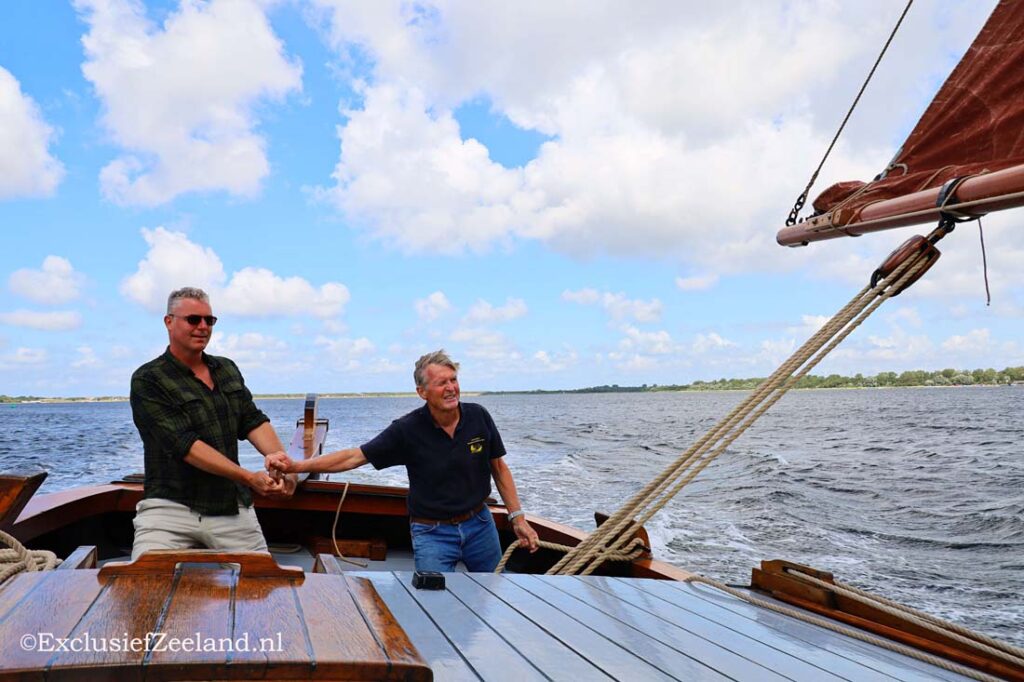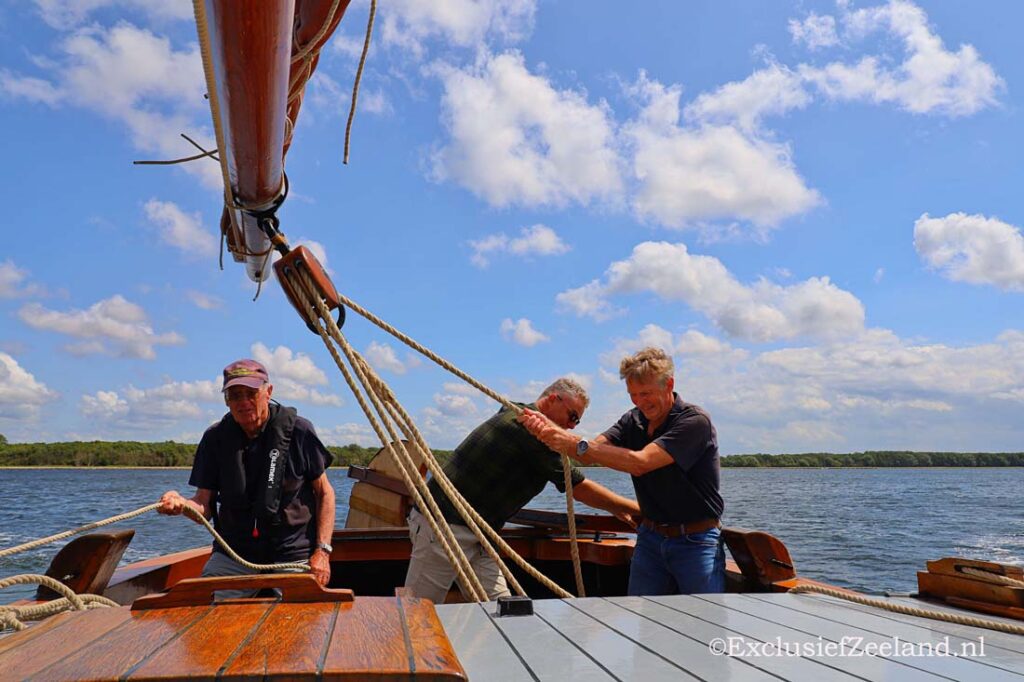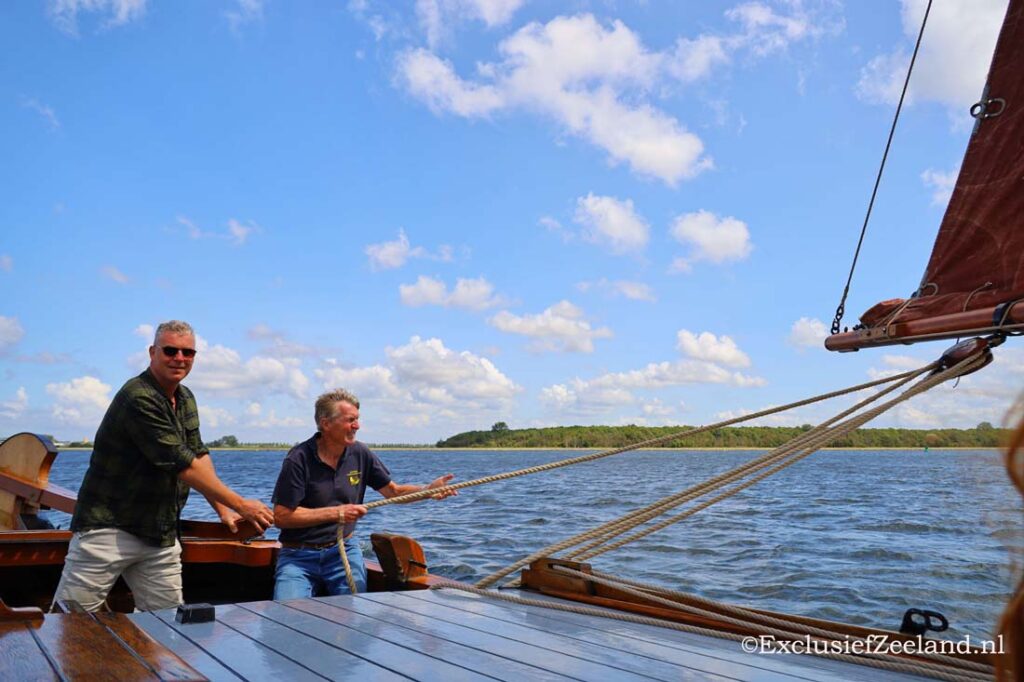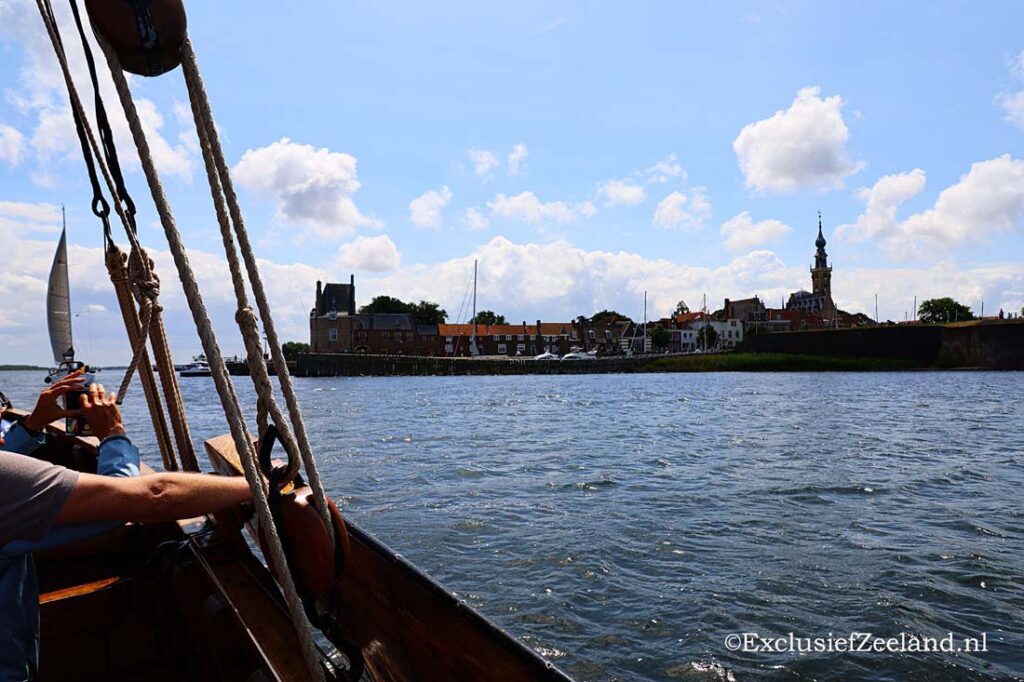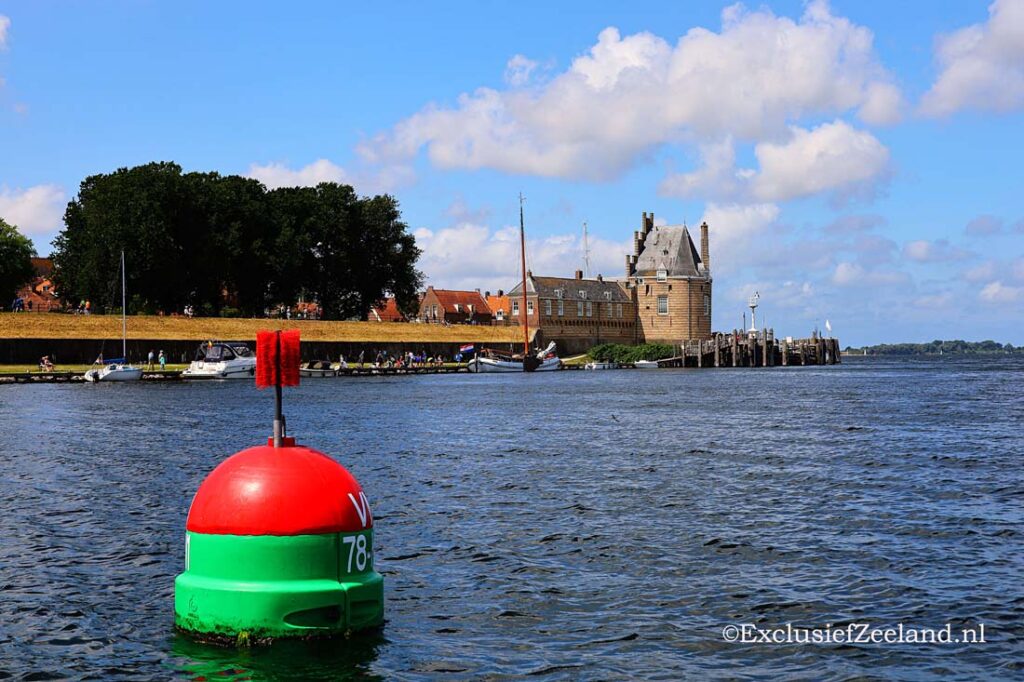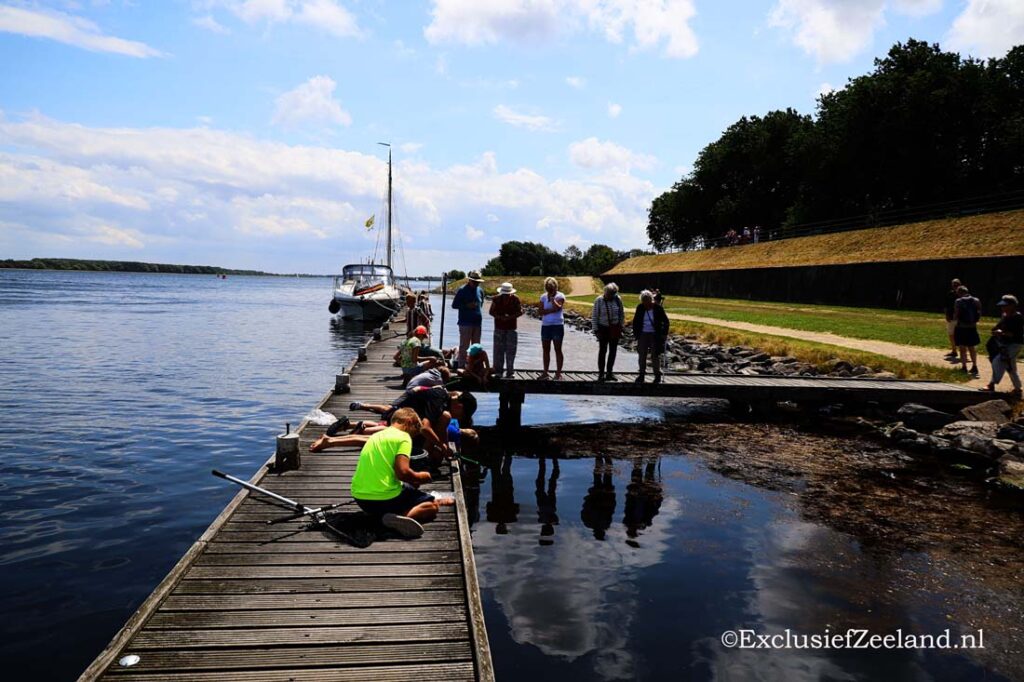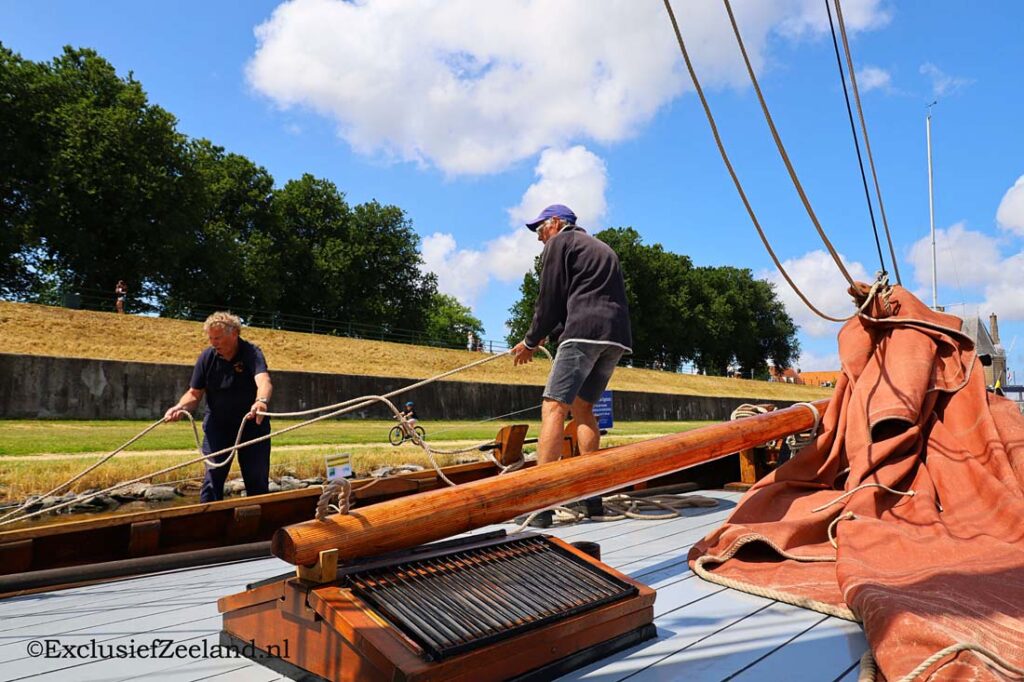Historic ships
It appears that the Hoogaars was first written about in the 16th century. In the 18th century, it developed into a fully-fledged fishing vessel and typical of the Zeeland Delta. The ship is increasingly tailored to specific conditions: A large tidal leap (about 4.5 metres) , high current speeds (up to 5kn) and constantly changing shallows. Furthermore, the ship was known as a “dry ship” in that it allowed relatively little tube water. In a note from the Museum Veere, we read that we could sail along on this Historic Hoogaars. In fact, the museum has a partnership with the Stichting Behoud Hoogaars and together they organise boat trips on the Veerse Meer. It sounds like an activity that belongs on every Zeeland lover’s bucket list. We are curious!
On the road
I still get ecstatic when I walk into Veere. What a beautifully situated town it is and what a unique historical sight. We find the museum on the Kaai (Quay) and buy our ticket there. The skipper or his mate will pick us up, says the friendly lady behind the counter. Outside the museum, a group of people is already waiting and soon it turns out that this is our sailing party. It is not long before Hans Selders, one of the crew members, comes to fetch us. We walk together towards the jetty. In the row of ferries and tour boats, at the very back is the “YE 36 Andries Jacob”, a beautiful Hoogaars. Its swords seem to breathe like gills, restless and impatient. We are sure, this ship wants to go outside.
Hoogaars Preservation Foundation (stichting behoud Hoogaars)
Today my daughter is coming along, which makes it extra fun to immerse ourselves in the past of the Zeeland Delta together. She jumps aboard smoothly and I do my best to match her. We meet our skipper Johan Villerius. He is one of the volunteers who maintains this sailing traditional Zeeland heritage. Once everyone is on board, skipper Hans is the first to start off with a short anthology about the ship we are on. The “YE 36 Andries Jacob” has been fully restored by the Stichting Behoud Hoogaars. Using fire and water, the oak planks have been bent, which involves a lot of craftsmanship. Crew members Paul vd Pols and Jan Schot confirm the enormous challenges involved in such a restoration. Complete French oak trees were needed to make certain curves in the wood possible. For a time, it was even very difficult to get hold of such trees because France needed a lot of them itself to restore Notre Dame. When the YE36 was still in its prime, it served mainly as a mussel ship but possibly also as a cargo ship for peat and coal.
Hoisting sails
Time to cast off! Johan starts the engine and gets the sturdy ship moving. Soon he thinks it is time to hoist the sails. Crew members jump into line and all seem to know exactly what to do. It is an impressive sight as the big brown sail is hoisted. I think to myself that this must have something to do with the Hoogaars being part of the “Brown Fleet”. Almost immediately, the wind lends its cooperation and you can see how nature and the Hoogaars reach agreement. Wow, what power is released!
Exclusive piece of the past
I’ve read that with the largest Skutsjesilenwedstrijd, some 60 ships participate. Consulting the Hoogaars register, I count around 20 sailing vessels. So Zeeland has to lose out to Friesland, but that also makes it extra special that the foundation succeeded in preserving the Hoogaars. An exclusive piece of the past, in other words.
Frolicking with Mother Nature
We are very lucky with the weather. Wind force 4-5 ensures that we sail towards the dam at a brisk pace. And the amount of clouds drifting by make it a photogenic party. The sight of Veere’s skyline makes it not difficult to imagine what it must have looked like a few centuries ago. Then it takes a moment to pay attention as we tack. Pulleys shoot rattling across the deck and the big sail folds obediently from port to starboard. Skipper Hans is clearly enjoying the trip and has the ship well under control. A strong fellow passenger even gets to take the helm for a moment. We see how he has to apply force to control the tiller. Wind in the hair and letting the ship romp with Mother Nature makes for big smiles on board. Far too soon, the home jetty comes into sight again. Deftly, Johan manoeuvres the Yerseke 36 into the right position. The time to say goodbye has come.
Highlighted
Later, when we have settled down on a nice terrace, we look back on a very enjoyable afternoon. What an experience this activity was and how right it would be if Zeeland’s Skutsjesilen became a little better known. From a youthful perspective, “it does sound a bit dull”. I have to admit that ” Sailing with Hoogaars” or “Hoogaars zeilen” may sound a bit less catchy than “Skutsjesilen”. We google the Zeeland dictionary and fall for the word “pulled”. In Zeeland, it means “draught”. So the contraction Hoogtrok means “a trip with a Hoogaars”. Giggling, my daughter asks if I might want to hoogtrok with her again. We laugh at our newly made-up word and resolve that from now on, we will go hoogtrokken every year 😉 From June to September, you can also sail along on Wednesdays and Thursdays . Put it on your bucket list: a Zeeland must do!





